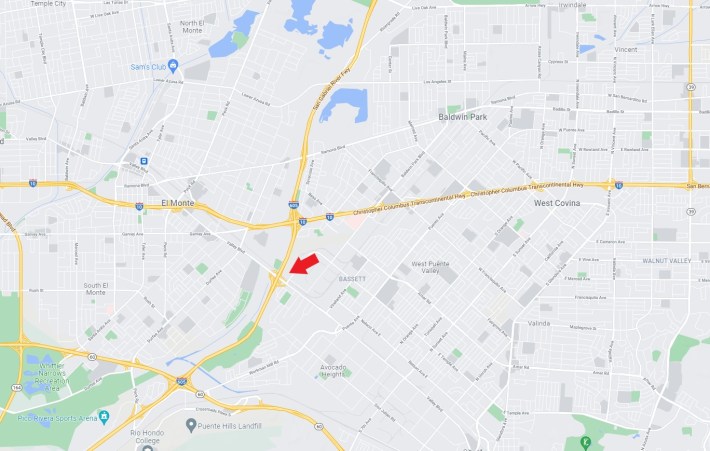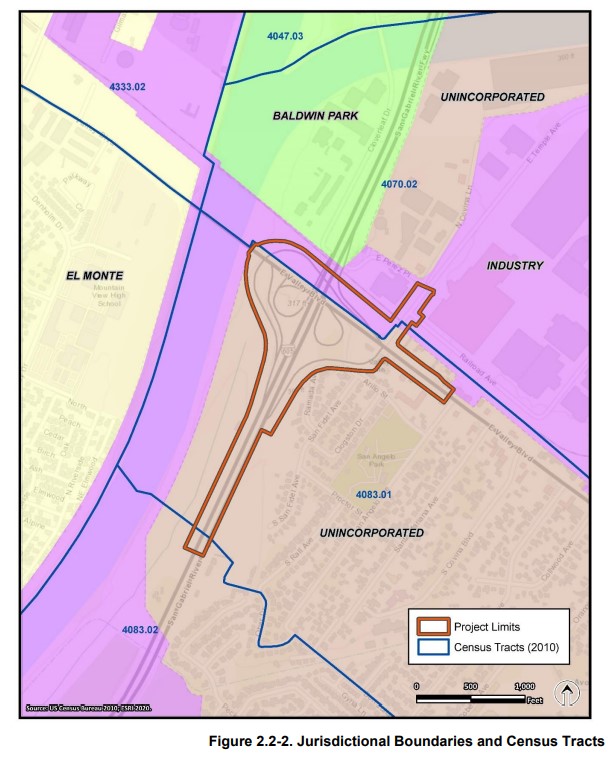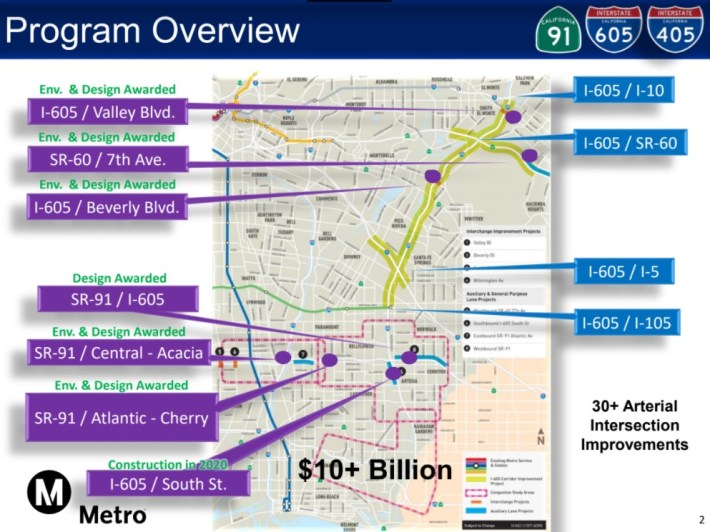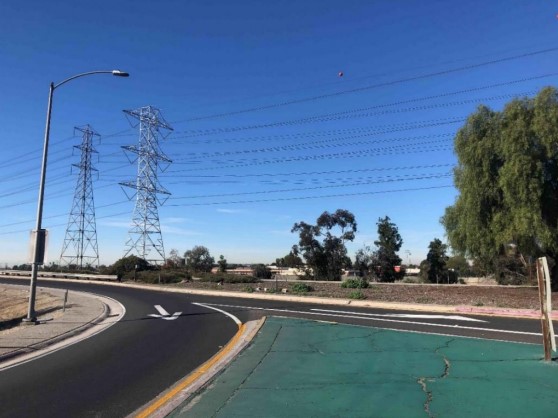Sometimes it's the little things that get to me.
Today, the Metro board Planning Committee signed off on parts of a freeway expansion project: the I-605 at Valley Boulevard Interchange Improvements Project.
The item didn't even warrant a discussion in committee. It passed on consent.
It's depressing that I can consider a $35 million highway widening to be a little project... but Metro is doing multiple billion-plus dollar freeway widenings - the $1.3 billion (and growing) 5 North widening, the $1.9 billion 5 South widening - and planning several more, including the ~$5 billion 605 Freeway Corridor Improvement Project (605CIP) and the ~$6 billion 710 widening. There are many more Metro freeway widenings in the hundreds-of-millions range: the $770 million 57/60 interchange widening, the $679 million North County 5 Freeway widening, the ~$300 million 71 Freeway widening, and others. So, when I see a $35 million freeway capacity expansion project, it doesn't seem quite so hellaciously destructive as all of its more costly peers. (Though $35 million could go a long way toward, say, providing fareless transit, more frequent buses, expansion of bike-share - all things that Metro struggles to pay for. Yes, I know that Metro has designed it so that it's very difficult to shift money from highways into anything but building highways.)
What's depressing is how inexorably these small freeway expansion projects continue to advance. And the Metro gaslighting that now promotes polluting auto-focused freeway expansion as good for equity and for active transportation.


The 605 Freeway Valley Boulevard on-/off-ramps are located in the San Gabriel Valley, just east of the San Gabriel River at its confluence with Walnut Creek - next to the Watershed Conservation Authority's partially built Duck Farm River Park. Jurisdictionally, the project is in the City of Industry and the unincorporated L.A. County communities of Avocado Heights and Bassett - very near portions of the cities of Baldwin Park and El Monte.
According to Caltrans' environmental assessment, the surrounding residential census tracts are 96, 98, and 100 percent "minority." The Avocado Heights area is predominantly (~80 percent) Latino, according to 2000 census data reported by the L.A. Times.
Though the community directly south of the project is residential, around the 605 Valley Boulevard transitions from its more commercial/retail corridor in the west San Gabriel Valley to its largely industrial complexion in the east Valley. The industrial belt roughly follows the Union Pacific Railroad (UPRR) tracks. At the 605, the tracks are just north of Valley Boulevard, and are shared by the Metrolink San Bernardino Line.

The 605/Valley Blvd project is part of Metro's $10+ billion "605 Hot Spots Program." 605 Hot Spots component projects mainly widen existing on-/off- ramps and connecting local streets to make way for the planned 605CIP (the project Metro announced would impact more than a thousand parcels along the 605 and 5 Freeways, including demolishing hundreds of homes). The 605 Hot Spots widening is funded via Measure M and R sales tax revenue ($1 billion and $590 million, respectively), with many components receiving additional state or federal highway expansion funding.
The 605/Valley Blvd project was environmentally cleared via a negative declaration (asserting the project has no adverse environmental impacts) approved by Caltrans in May 2020. The environmental documents use discredited Level of Service metrics to show that widening roadways would "reduce congestion on Valley Boulevard" and "alleviate mobility constraints." The project would widen roads, increasing car congestion and concomitant pollution burdens on the surrounding communities.
The project would widen many components of the Valley Boulevard on/off ramps and the streets they connect to:
- Widening Valley Boulevard, adding new turn lanes and signals, and additional margins
- Widening Temple Avenue from four lanes to
sixfive lanes - Widening/reconfiguring 605 Freeway on- and off-ramps, including expanding one-lane ramps to two lanes, and two-lane ramps to three lanes
The project right-of-way impacts (which, for many freeway projects, mean demolition of adjacent homes and businesses) are minimal: six parcels, several of which are undeveloped. There are no homes, and only a relatively small partial taking of one edge of one business property.
Caltrans and Metro tout the project as benefiting alternative transportation. The environmental documents assert that the project would "enhance bicyclist and pedestrian safety" and "help reduce GHG [greenhouse gas] emissions" by supporting alternative modes of transportation: biking and walking.
All of the non-car features of the project are:
- Adding a sidewalk where it is currently missing on the north side of Valley Boulevard - including ADA-mandated features such as wheelchair ramps.
- Adding "a widened shoulder to provide a future bike lane along Eastbound Valley Boulevard up to the northbound loop on-ramp." Installing this 1,400-feet length of bike lanes does not appear to be actually included in the project, but the margin for potential future bike lanes is nonetheless noted as helping reduce GHG emissions.
- Reducing the curve radius of the northbound loop on-ramp from eastbound Valley Boulevard; this "would be reduced to slow entering traffic to enhance safety for bicyclists and pedestrians and support use of these alternative modes." Note that the reason the turning radius is being narrowed is to accommodate a second lane on the current one-lane on-ramp (without taking out the business next door). Caltrans asserts that an upcoming curve radius would slow Southern California drivers entering the on-ramp, and that this would encourage bicycling. Really.
Today's Metro staff report repeats some the same sorts of questionable equity analysis that often appears on Metro Highway Program reports. Each Metro staff report now includes analysis of how the project will impact equity, but many of theses analyses are cut-and-paste platitudes.
The staff report equity analysis touts "equitable outcomes" via a community engagement process, which is done by "all agency project partners" (perhaps not actually done by Metro). It is couched in vague "may include" language (emphasis added):
The proposed action is anticipated to address community needs through an engagement process and achieving equitable outcomes for all users, which are high priorities for all agency project partners. All agency project partners will continue to support outreach efforts that may include, but are not limited to, community meetings/activities; stakeholder briefings/presentations; round table discussions; multi-lingual mailers/postcards, notices; virtual meetings; website posts and email distribution; and social media, as needed, to inform the project development process.
I was unable to find evidence of any community meetings, virtual meetings, website posts, or social media that Metro has done on the 605/Valley Blvd project. The only publicly-accessible Metro project presentations appear to have taken place at San Gabriel Valley Council of Governments (SGVCOG) meetings.
The Metro staff report equity analysis goes on to tout active transportation benefits (not necessarily equity): "The proposed action is also anticipated to... reduce the potential for pedestrian, cyclists, motorists, and passenger/freight train conflicts." The three-paragraph analysis includes excessive detail about walk and ADA features: "painted/delineated crosswalks and pedestrian crossing indicators (push buttons)" and "upgraded ADA compliant pedestrian facilities" including "curb ramps, sidewalks, driveways, and auto pedestrian signals for the sight and hearing impaired," "pedestrian barricades, gates, handrails and fencing," and "tactile warning strips."
The Metro equity analysis includes nothing about how these widening projects induce more driving, subjecting nearby families to more air and noise pollution, while supporting greater volumes of car traffic that degrade walkability and bikeability.
If Metro and Caltrans had approached this project from a perspective that valued anything more than speeding drivers, they would have looked at better neighborhood access to the San Gabriel River and the Duck Farm River Park. They would have upgraded bare-bones bus stops in the project area. Instead all of these would be even more difficult to access by foot, bike, or transit, due to more and more car traffic congesting the area.
This 605/Valley Blvd project isn't anywhere near the most destructive sort of Metro/Caltrans freeway widening projects that I often write about. But the way it is sold to the public is all too typical. And the cumulative effect of Metro and Caltrans routine gaslighting ends up building more car-centric places that are awful for people on foot or bike, for people who live nearby, and for a planet that would benefit from life-supporting climate.
SBLA San Gabriel Valley coverage, including this article and SGV Connect, is supported by Foothill Transit, offering car-free travel throughout the San Gabriel Valley with connections to the new Gold Line Stations across the Foothills and Commuter Express lines traveling into the heart of downtown L.A. To plan your trip, visit Foothill Transit. “Foothill Transit. Going Good Places.”
Sign-up for our SGV Connect Newsletter, coming to your inbox on Fridays.







